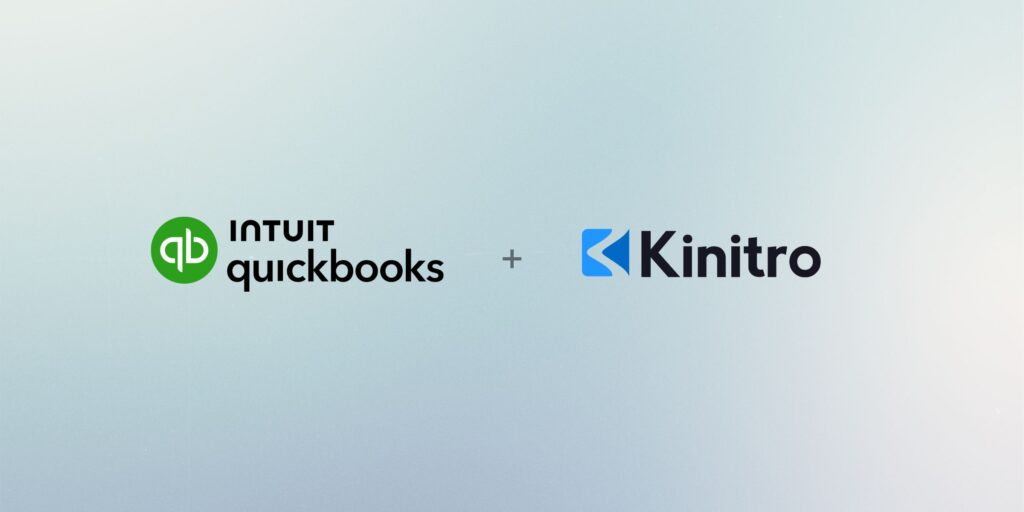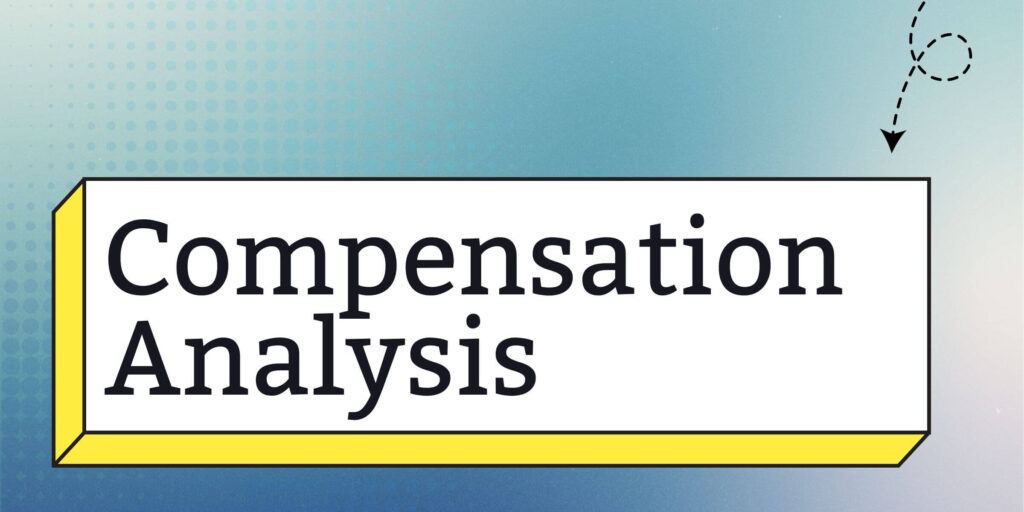Are you looking to supercharge your sales team’s performance and drive revenue growth? The key lies in understanding and measuring sales enablement success.
By focusing on the right metrics and implementing effective strategies, you can unlock your sales team’s full potential and streamline the sales process.
With an arsenal of quantitative sales enablement metrics and strategies at your disposal, you will be well-equipped to evaluate and optimize your sales enablement efforts.
In this blog post, we will delve into the importance of sales enablement benchmarks and explore the various metrics, strategies, and tools that can help you gauge your sales team’s performance.
From assessing sales cycle efficiency to leveraging data for strategy refinement, we’ll guide you through the essential elements required to supercharge your sales enablement program and drive success.
Key Takeaways
- Define sales enablement benchmarks to measure success and identify areas for improvement.
- Track key performance metrics such as win rate, closing ratio, quota attainment and revenue generated.
- Leverage data insights to refine strategies & assess performance against industry standards.
Defining Sales Enablement Benchmarks
Sales enablement involves supplying your sales team with resources, tools, and content to boost their sales. This process aims to boost your sales team’s performance and enable them to meet their sales objectives. Measuring the success of sales enablement requires focusing on different metrics and data points to evaluate the program’s effectiveness.
These metrics provide helpful information that can shape more efficient sales training programs. This empowers sales teams to engage with customers effectively and secure more deals.
Utilizing data-driven insights can help you reach ambitious sales enablement objectives and refine your sales strategies. To measure sales enablement success, it’s essential to track the right metrics and analyze the results.
In the subsequent sections, we will examine the primary metrics and strategies to help measure the success of your sales enablement and refine your initiatives.
Setting the Bar: Key Metrics for Sales Enablement Success
Keeping track of sales enablement metrics is key to showing the success of your sales enablement initiatives and gaining backing for further investments in the program.
The sales and marketing teams’ output can be assessed based on three primary categories: performance, proficiency, and productivity.
Performance metrics are very important to measure the success of sales. Some commonly used performance metrics include:
- Win rate
- Closing ratio
- Quota attainment
- Revenue generated
These metrics help evaluate the effectiveness of the sales team and their ability to meet targets and generate revenue, providing valuable insights for sales leaders.
In the next subsections, we will cover how to evaluate sales cycle efficiency, monitor quota attainment trends, and scrutinize win rates. These vital sales performance indicators will assist you in measuring your sales enablement success and refining your sales process.
Assessing Sales Cycle Efficiency
The sales cycle duration, tracked from the initial contact with a prospective lead to the final sale, is an important metric to consider when evaluating the effectiveness of your sales enablement strategies. Tracking sales cycle length is important for:
- Setting sales targets
- Predicting revenue
- Comprehending the resources required to acquire each customer
- Providing the chance to refine your sales process
By tracking the length of your sales cycle, you can identify areas for improvement, such as the lengthening of the demo stage or the slowing down of the initial meeting stage. Addressing these issues can help enhance your sales process adherence and improve your sales reps’ performance.
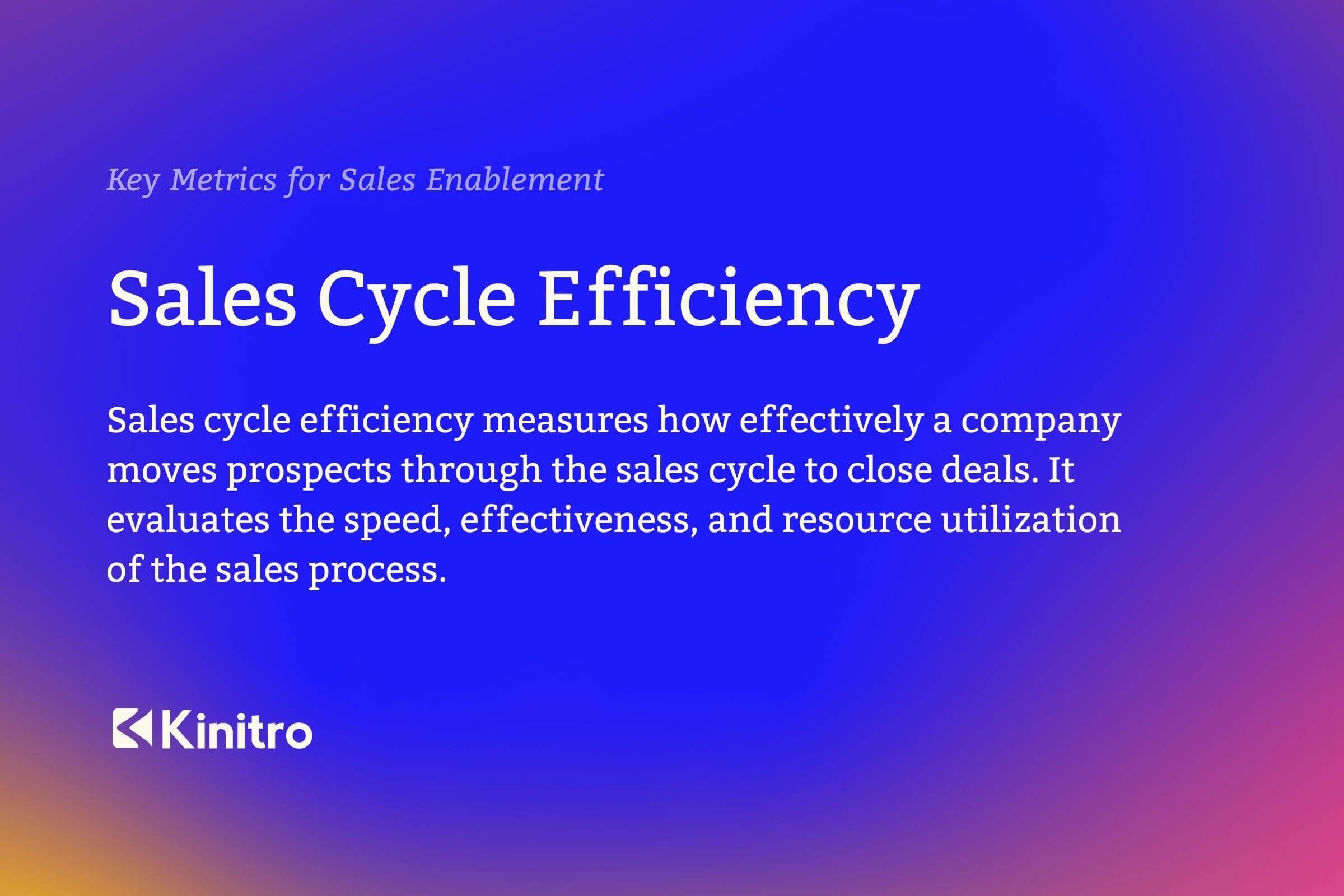
Tracking Quota Attainment Trends
Quota attainment is a measure of the proportion of sellers who have met or exceeded their assigned sales targets.
Monitoring quota attainment is important for identifying reps who may need additional enablement assistance and understanding which regions consistently hit their quotas.
To calculate quota attainment, divide a salesperson’s actual sales in a given time period by their quota (or target sales) for that same period.
By comparing quota attainment to performance in previous quarters or years, you can identify patterns in sales reps’ quota attainment and implement strategies to improve sales performance and achieve quota attainment.
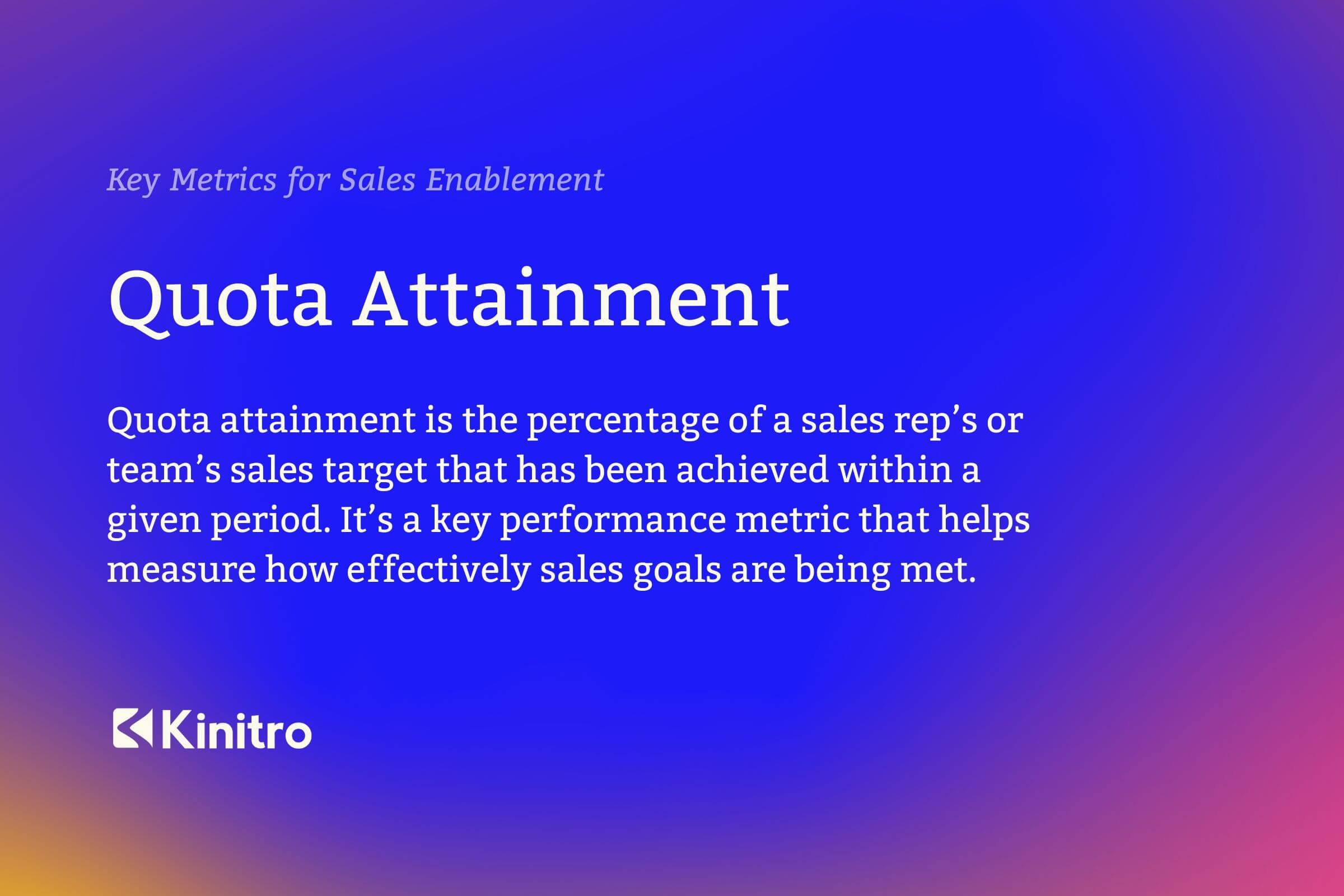
Analyzing Win Rates
Win rate is a metric that indicates how often salespeople convert opportunities into closed deals.
Monitoring win rates is important for understanding your sales team’s performance and pinpointing areas where your sales enablement strategies may need refinement.
To calculate win rate, divide the number of wins by the total number of opportunities within a given sales cycle.
Incorporating a thorough sales enablement strategy can accelerate win rates, enhance salespeople’s satisfaction, and heighten the overall efficiency of the sales process.
By understanding and tracking win rates, your sales team can identify areas of weakness and implement strategies to improve their performance and drive sales success.
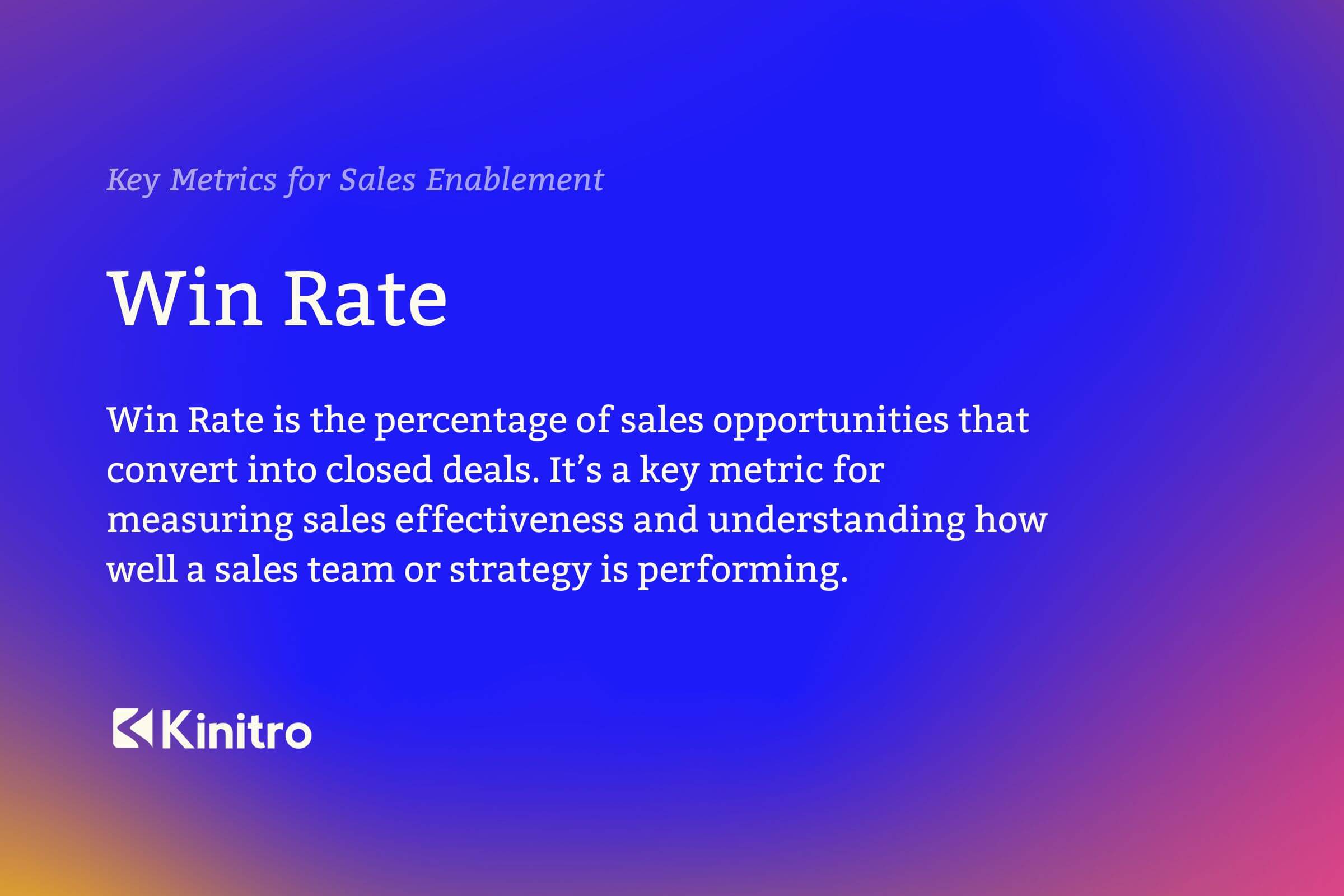
The Role of Sales Enablement in Revenue Growth
Sales enablement is central to driving revenue growth by supplying data-driven content, fostering a robust sales team culture, and improving market understanding.
Through the implementation of effective sales enablement strategies, organizations can provide their sales teams with the necessary resources, support, and guidance to boost their productivity and generate revenue.
Metrics such as the average revenue generated per sales rep and the percentage of revenue from existing customers can provide valuable insights into the impact of sales enablement on revenue growth.
By focusing on these metrics and continuously refining your sales enablement strategies, you can measure sales enablement success, drive revenue growth, and overall business success.
Sales Enablement Strategies That Impact Key Performance Indicators
Application of diverse sales enablement strategies can have a positive impact on your sales team’s performance and contribute to success. These strategies could include:
- Enhancing time spent selling
- Improving lead quality
- Offering extensive training and coaching
- Tracking lead-to-opportunity conversion rates
- Using data and analytics to maximize conversion rates
Closing the loop in your sales enablement strategy development is crucial for ensuring increased efficiency and effectiveness, optimized sales funnel, improved collaboration, and strengthened customer loyalty and trust.
By continuously refining your sales enablement strategies based on key performance indicators, you can create a well-trained, consistent sales team that is capable of achieving shorter sales cycles, improved productivity, and increased sales results.
Measuring Sales Rep Performance Beyond Numbers
Though quantitative metrics are important for gauging sales rep performance, qualitative metrics hold a significant position too. The primary qualitative metrics for evaluating sales rep performance are:
- Rep satisfaction
- Customer satisfaction
- Communication skills
- Product knowledge
- Ability to build relationships
- Problem-solving skills
- Adaptability
- Teamwork
- Professionalism
- Time management
These qualitative metrics provide insight into the sales representative’s effectiveness in forming relationships, comprehending customer needs, and delivering value.
By considering both quantitative and qualitative metrics, you can obtain a comprehensive understanding of your sales rep’s performance and make informed decisions to boost sales performance and foster business growth.
Evaluating Customer Interactions and Satisfaction
Evaluating customer satisfaction and the quality of interactions with your sales team is necessary for estimating the success of your sales enablement program. Metrics such as customer referral and customer satisfaction index (CSAT) can be used to gauge customer satisfaction and loyalty.
To measure customer interactions, tools such as:
- Surveys
- Sales metrics
- Sales activity metrics
- Interactive technology
- Observation
can be utilized. By monitoring these metrics, you can identify areas where your sales reps excel and areas that require improvement, ultimately ensuring a better customer experience and driving sales success.
Tools and Techniques to Track Knowledge Retention
Monitoring knowledge retention among sales reps is key to understanding the success of your sales enablement program. By monitoring knowledge retention rates and evaluating content engagement, you can identify which training methods are successful and where further development is necessary.
Various tools and methods can be used to assess knowledge retention in sales enablement, such as:
- Skills tracking software
- Customer retention software
- Sales gamification software
- Sales training software
Implementing quizzes or assessments to test knowledge retention can also be effective in gauging sales reps’ understanding of products, features, pricing, and other aspects of sales.
The Importance of Sales Content Utilization
Monitoring content usage and adoption is necessary for evaluating the success of your sales enablement strategies.
Metrics such as views, time spent on each piece of content, and downloads can be used to measure content adoption for customers.
Sales teams rely on metrics to measure the effectiveness of their content. These metrics could include open, use and share rate.
By monitoring content adoption rates, you can ensure that your sales reps are utilizing the right sales enablement content to enhance their performance and drive sales success.
Sales Enablement Teams: Harnessing Employee Net Promoter Score (NPS)
Employee Net Promoter Score (eNPS) is a recognized measure used to gauge employee experience and satisfaction within an organization.
Measuring eNPS allows you to assess the satisfaction and engagement levels of your sales enablement team and pinpoint areas for refinement.
Tracking eNPS can be done using survey platforms such as Google Forms or Survey Monkey. By monitoring eNPS and making necessary adjustments, you can foster a positive work environment, increase employee satisfaction, and ultimately drive sales enablement success.
Optimizing the Onboarding Process
Assessing onboarding time is a vital measure for gauging sales enablement success. Keeping track of the duration of sales onboarding sessions ensures that new reps are allocated sufficient time for onboarding and helps identify any representative significantly exceeding the average onboarding time.
Sales enablement content, such as product start guides and educational materials, can expedite and enhance customer onboarding by providing reps with product training. By optimizing your onboarding process, you can set your sales reps up for success and drive sales enablement performance.
Sales Enablement Technology Adoption Rates
Monitoring technology adoption rates within sales enablement programs is important for understanding the success of your sales enablement initiatives. Sales enablement technology, such as:
- CRM systems
- Content management platforms
- Sales intelligence tools
- Prospecting software
- Sales Commission Software
can bolster and optimize the sales process by providing resources, insights, and automation to sales teams.
By evaluating the adoption rates of various technologies, you can determine how well these tools are being used by your sales teams and identify any areas for improvement in your sales enablement process. This data can be used to inform your decision-making and resource allocation for future sales enablement efforts.
Leveraging Data for Sales Enablement Strategy Refinement
Data-based insights can serve to refine and enhance your sales enablement strategies, empowering your sales team to achieve superior results and propel overall business success. By collecting and analyzing data, you can make informed decisions and refine your sales enablement strategies accordingly.
Companies such as HubSpot, Salesforce, IBM, and Slack have successfully leveraged data to synchronize sellers with customer buying habits, formulate sales playbooks, assess key metrics, and establish clear objectives for their sales teams. By leveraging data for sales enablement strategy refinement, you can optimize your sales process and drive success.
Closing the Loop: From Benchmarks to Better Sales Practices
Applying sales enablement benchmarks can assist your sales team in continuously refining their sales practices and achieving success.
When their performance is compared to industry benchmarks, sales teams can acknowledge any disparities and formulate strategies to improve their sales practices.
This analysis enables sales teams to recognize their strengths and weaknesses, resulting in more effective sales strategies and improved overall performance.
Feedback is necessary for refining sales practices based on benchmarks. Collecting feedback from customers and evaluating it alongside sales benchmarks allows sales teams to:
- Make educated decisions
- Adjust their strategies to enhance sales success
- Continually measure and analyze sales performance through benchmarks
- Make data-driven decisions
- Recognize opportunities for improvement
Summary
In this blog post, we have explored the importance of sales enablement benchmarks, key metrics, and strategies to gauge your sales team’s performance and drive success. By focusing on these elements and continuously refining your sales enablement strategies, you can unlock your sales team’s full potential and streamline the sales process.



